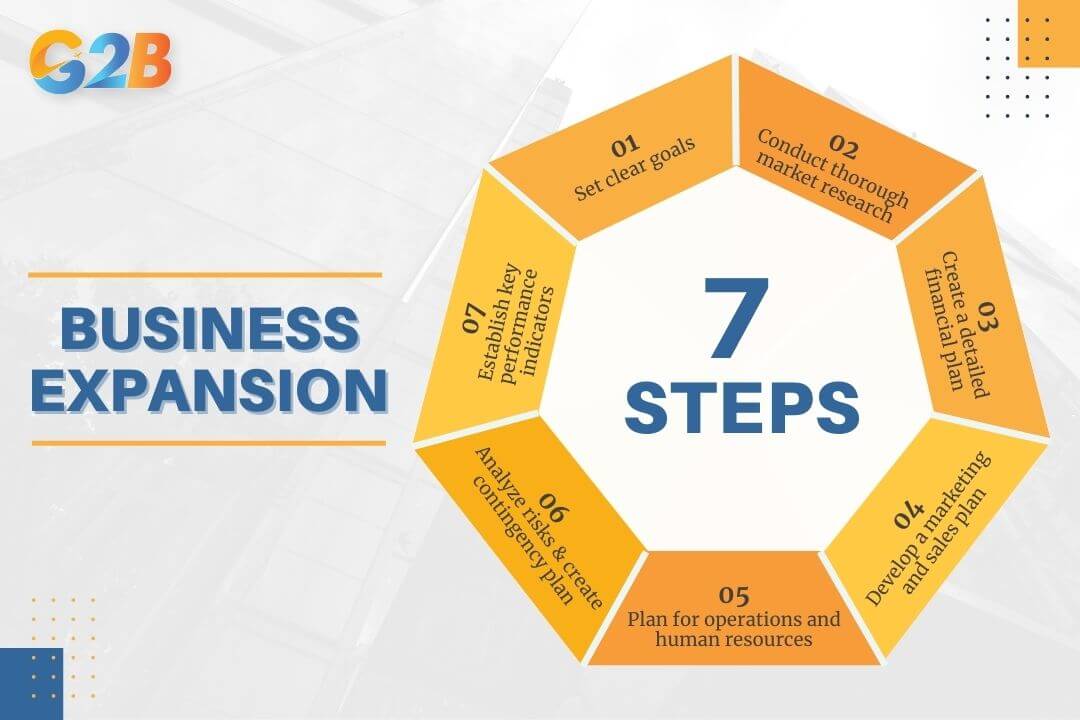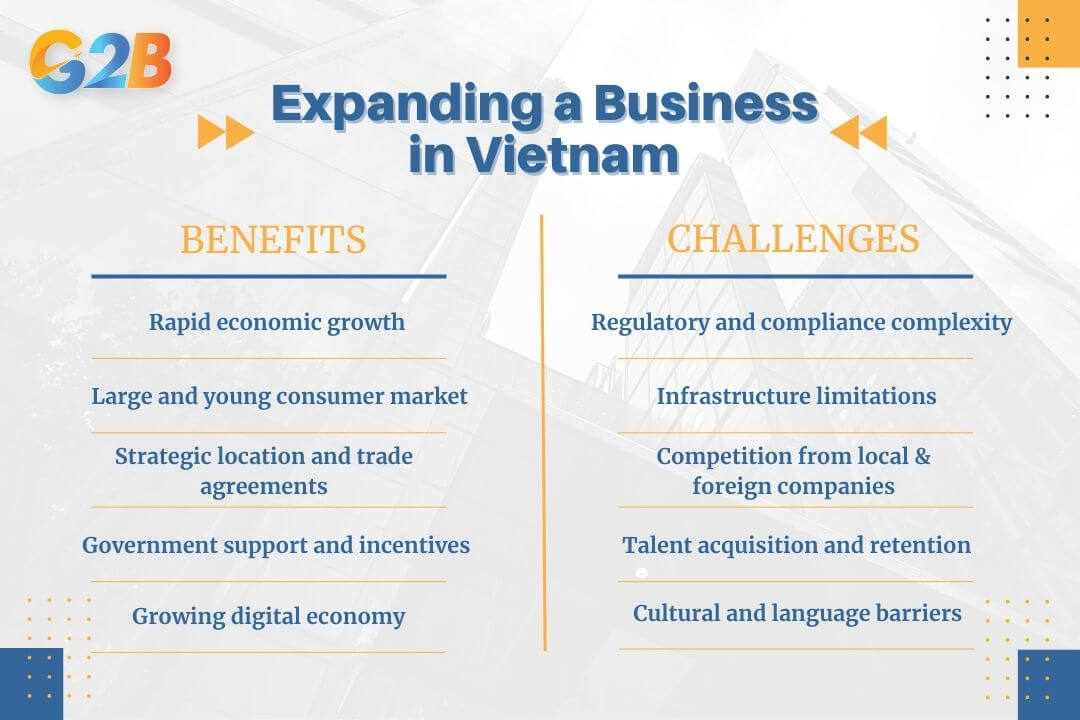Business expansion is a pivotal goal for any ambitious enterprise, representing a deliberate and strategic push toward significant growth. For business owners, entrepreneurs, and managers charting the course for their company's future, understanding the nuances of expansion is the first step toward sustainable success. Let’s explore the definition of business expansion, the critical reasons to pursue it, common strategies, and a detailed roadmap for planning the company's growth in this article.
What is business expansion?
Business expansion is a stage in a company's life cycle where it actively pursues strategies to grow its operations, revenue, market share, and profitability. This phase involves moving beyond the current scale to capture new opportunities, whether in existing markets or new ones. It’s a calculated effort to scale the business substantially and measurably, often marking a significant turning point in the organization's history.
Unlike organic growth that happens gradually, business expansion is a planned and strategic undertaking that may involve internal growth as well as external methods such as mergers, acquisitions, or partnerships. It is a proactive response to market opportunities, competitive pressures, or the strategic vision of the leadership team. For many international companies, a popular choice is to expand to Vietnam thanks to its fast-growing economy, competitive labor force, and favorable investment climate. In such cases, one of the first legal steps is to register a company in Vietnam, ensuring compliance with local laws while unlocking access to a dynamic consumer base.
Why do businesses need to expand?
Expansion is not merely about getting bigger, it's a strategic imperative for long-term survival and prosperity in a competitive landscape. Companies that actively pursue growth can unlock a multitude of benefits that fortify their market position and enhance their financial health.
- Increase revenue and profits: The most direct benefit of expansion is the potential for higher sales and, consequently, greater profitability. By reaching more customers, entering new territories, or launching new products, a business can create new revenue streams that contribute to its bottom line.
- Achieve economies of scale: As a business grows, it can often produce goods or services more efficiently, leading to lower per-unit costs.
- This is achieved through bulk purchasing of raw materials, optimizing production processes, and spreading fixed costs like administration and marketing over a larger output.
- Gain market share and competitive advantage: Expansion can be a powerful tool for capturing a larger portion of the market.
- A greater market share often translates to increased brand influence, greater pricing power, and a stronger competitive moat that makes it harder for rivals to compete.
- Enhance brand recognition and presence: Growing a business either geographically or across new product or service categories naturally increases its visibility. A wider presence helps build a stronger, more recognizable brand that customers trust.
- Diversify and reduce risk: Relying on a single market or a narrow product line can be risky.
- Expansion allows a company to diversify its revenue sources, reducing its dependency on any single market segment and making it more resilient to economic downturns or shifts in consumer preferences.
- Attract and retain top talent: Growth creates new opportunities for employees, offering career advancement and professional development. Ambitious and talented individuals are often drawn to dynamic, growing companies where they can make a significant impact.
- Improve access to capital and resources: Larger, more established companies with a proven track record of growth often find it easier to secure financing from investors and lenders. This improved access to capital can fuel further innovation and expansion.
Common business expansion forms and strategies
There are several well-defined strategies a business can adopt to achieve its expansion goals. Choosing the right form of expansion is crucial, as it directly impacts a company’s growth trajectory and long-term sustainability.
Market penetration
Market penetration focuses on increasing market share for existing products within the current market. This is often the first expansion strategy businesses consider as it leverages existing resources and capabilities. Implementation involves tactics like aggressive marketing campaigns, competitive price adjustments, and loyalty programs to attract customers from competitors and encourage existing customers to buy more. The goal is to saturate the current market more deeply.
Market development
Market development involves taking existing products and introducing them to new markets. This could mean expanding into new geographic areas - regionally, nationally, or internationally - or targeting new customer segments. This strategy requires thorough market research to understand the needs and preferences of the new target audience. It often involves creating new distribution channels and adapting marketing messages to resonate with the new demographic.
Product development
Product development is the strategy of creating new products or services to sell to your existing customer base. This approach leverages brand loyalty and an established customer relationship. Success in product development hinges on a deep understanding of customer needs and the ability to innovate. It can involve creating entirely new products or developing variations and improvements on existing ones to meet evolving demands.
Diversification
Diversification is the most ambitious strategy, involving the development of new products for entirely new markets. This approach carries higher risk but also offers the potential for significant rewards by moving the company into new, potentially high-growth areas. Diversification can be related (leveraging existing technologies or expertise) or unrelated (entering a completely new industry). It's a way to build a more resilient and varied business portfolio.
Mergers and acquisitions (M&A)
Mergers and acquisitions (M&A) involve combining with or purchasing another company. This is often the fastest way to achieve expansion, providing immediate access to new markets, products, technologies, or talent. M&A can be a complex and costly process, requiring careful due diligence, risk assessment, and post-merger integration management to ensure the target company is a good strategic fit. Successful integration of the two entities is critical to realizing the expected synergies and value.
Franchising
Franchising allows a business to expand by licensing its business model, brand, and operating procedures to independent entrepreneurs (franchisees). This enables rapid geographic expansion with lower capital investment from the parent company. The key to successful franchising is a proven and replicable business model, strong brand recognition, a comprehensive support system for franchisees, and rigorous quality control systems to maintain brand standards across locations. It allows for scalable growth while maintaining brand consistency.
Strategic alliances and partnerships
Strategic alliances involve collaborating with other companies to achieve a common goal, such as entering a new market or developing a new product. This can be a flexible, lower-risk way to access new resources and capabilities. Partnerships can take many forms, from joint ventures to marketing agreements. The success of a strategic alliance depends on shared objectives, mutual trust, and a clear understanding of each partner's roles and responsibilities.

There are several well-defined strategies a business can adopt to achieve its expansion goals
How to plan business expansion?
A meticulous and well-structured plan is the bedrock of any successful business expansion. Rushing into growth without a clear roadmap can lead to financial strain, operational chaos, and ultimately, failure.
1. Set clear goals (Use SMART framework)
The SMART framework is an excellent tool for setting clear and actionable expansion goals. SMART stands for Specific, Measurable, Achievable, Relevant, and Time-bound. Applying this framework forces you to move beyond vague aspirations like "grow the business" to concrete, quantifiable objectives. It provides a clear target for the entire organization to work toward and a benchmark against which to measure progress.
2. Conduct thorough market research
Before making any significant investment, you must deeply understand the market you plan to enter or penetrate further. This research should be multi-faceted and data-driven. A critical component is analyzing the competition to understand their strengths, weaknesses, pricing strategies, and market share. Furthermore, you must identify your target audience in the new market, understanding their demographics, needs, and buying behaviors.
Finally, assess the market size and growth potential to ensure the opportunity is large enough to justify the investment and effort. Including a comprehensive SWOT analysis helps identify internal capabilities and external market conditions critical for strategic decisions.
3. Create a detailed financial plan
Expansion requires capital, and a comprehensive financial plan is essential to secure funding and manage resources effectively. This plan should include detailed financial projections, forecasting revenues, costs, and profitability for the expansion project. It's also crucial to develop a budget that allocates resources for key activities like marketing, hiring, and capital expenditures.
Lastly, you must identify your funding sources, whether it's through self-funding, bank loans, or attracting investors, and prepare the necessary documentation to secure the capital. Managing cash flow carefully during expansion is vital to ensure liquidity and avoid potential financial bottlenecks.
4. Develop a marketing and sales plan
A robust marketing and sales plan is needed to build brand awareness and drive revenue in the new market. This begins with developing a clear go-to-market strategy that outlines how you will reach and engage your target customers. You will also need to create tailored marketing campaigns and messaging that resonate with the new audience, highlighting your unique value proposition. Finally, it's important to build and train a sales team equipped with the skills and knowledge to effectively sell your products or services in the expanded territory.
5. Plan for operations and human resources
A solid operational and HR plan ensures you can scale smoothly without sacrificing quality or efficiency. This involves scaling your infrastructure by evaluating and upgrading your technology, supply chain, and production capabilities to handle increased demand. You will also need to hire and train new staff to support the expansion, from frontline employees to management.
It's also critical to establish efficient processes and workflows to ensure consistent quality and service delivery as the company grows. Additionally, cultivating a strong company culture aligned with the expanded scale helps maintain employee engagement and operational coherence. Additionally, cultivating a strong company culture aligned with the expanded scale helps maintain employee engagement and operational coherence.
6. Analyze risks and create a contingency plan
Every business venture carries risks, and expansion is no exception. Proactively identifying and planning for potential challenges can be the difference between success and failure. You should conduct a thorough risk assessment to identify potential financial, operational, and market risks associated with the expansion. Based on this assessment, develop a contingency plan that outlines specific actions to be taken if these risks materialize.
This "Plan B" will help you mitigate the impact of unforeseen problems and stay on track. It is also important to continuously monitor risks throughout the expansion process and update your contingency plans accordingly. It is also important to continuously monitor risks throughout the expansion process and update your contingency plans accordingly.
7. Establish key performance indicators (KPIs)
To manage your expansion effectively, you need to track your progress against your goals. Establishing clear KPIs allows you to monitor performance and make data-driven decisions. These KPIs should be designed to track the success of the expansion in real-time, focusing on metrics related to sales, customer acquisition, and profitability. It's also important to set up a regular review process to analyze KPI data, identify areas for improvement, and make necessary adjustments to your strategy to ensure you stay on course.

There are 7 steps to plan business expansion
Benefits and challenges when expanding a business in Vietnam
Expanding a business in Vietnam offers numerous benefits but also presents specific challenges that companies should carefully consider.
- Benefits:
- Rapid economic growth: Vietnam is one of the fastest-growing economies in Southeast Asia, with strong GDP growth driven by manufacturing, exports, and digital transformation. This creates abundant opportunities for new market entry and business expansion.
- Large and young consumer market: Vietnam has a population of nearly 100 million, with a young demographic that is tech-savvy and increasingly affluent. This leads to rising demand for consumer goods, services, and technology-related products.
- Strategic location and trade agreements: Vietnam’s geographic position is favorable for accessing other Asian markets. It has free trade agreements with numerous countries, which reduce tariffs and facilitate easier market access for businesses.
- Government support and incentives: The Vietnamese government actively encourages foreign investment through incentives like tax breaks, simplified administrative procedures, and support in industrial zones.
- Growing digital economy: With increasing digital infrastructure and fintech innovations, businesses in e-commerce, fintech, and technology sectors can leverage rising digital adoption.
- Challenges:
- Regulatory and compliance complexity: Navigating Vietnam’s regulatory environment can be complex due to frequent policy changes and bureaucracy. Ensuring compliance requires local expertise and adaptability.
- Infrastructure limitations: While improving, infrastructure such as transport and logistics can still pose operational challenges, especially outside major cities.
- Competition from local and foreign companies: The market is competitive, with strong domestic firms and international players. Differentiating products and building brand loyalty takes strategic effort.
- Talent acquisition and retention: Though the labor force is young and growing, there are skills gaps in specialized areas that require investment in training and development.
- Cultural and language barriers: Understanding and adapting to local business culture and consumer behavior is essential for success, as is overcoming language barriers.

Expanding a business in Vietnam offers many challenges and benefits
Business expansion is a strategic journey that, when navigated with care and precision, can lead to remarkable growth and long-term success. It is not a destination but a continuous process of evaluation, planning, and execution. From setting clear goals and conducting thorough research to managing risks and learning from the successes and failures of others, a well-orchestrated expansion is the key to unlocking a business's full potential. With the right strategy and a clear vision, companies can transform their ambitions into market leadership.


 Delaware (USA)
Delaware (USA)  Vietnam
Vietnam  Singapore
Singapore  Hong Kong
Hong Kong  United Kingdom
United Kingdom 
